Tagetes Marigolds Are Easily Grown From Seed – And Can Flower In As Little As 60 Days


Elizabeth is a Permaculture Garden Designer, Sustainability Consultant and Professional Writer, working as an advocate for positive change. She graduated from the University of St. Andrews with an MA in English and Philosophy and obtained a Diploma in Applied Permaculture Design from the Permaculture Association.
Reviewed By PETER LICKORISH

Peter is a Horticulture Lecturer and self-employed Horticulturist, with a passion for diverse areas of the industry - from garden design to the science behind plant growth and propagation. He has completed the Royal Horticultural Society’s Master of Horticulture (MHort) Award and lectures on RHS courses at Bedford College.
Contributions From EMILY CUPIT

Emily is a Gardening Writer, Photographer and Videographer from Derbyshire, UK. She is the Founder of Emily's Green Diary - a community of more than 75,000 people who share in her gardening journey.
MARIGOLDS GUIDES
When we talk about marigolds in the UK, we might be talking about a number of different plants.
Marigolds such as French and African marigolds are members of the Tagetes genus, but Calendula (Calendula officinalis) are also referred to as ‘Pot Marigolds’ here in the UK.
In this guide, we are talking about Tagetes marigolds, which luckily, are very easy to sow.
| Difficulty | Easy |
| Equipment Required | Seeds, seed tray, pots, growing medium |
| When To Sow | March to May |
| When To Plant Out | May to July |
Choosing A Variety
There are several different types of marigolds that you might grow in your garden.
The first thing that you will have to think about if you are considering growing these annuals from seed is which species and variety you would like to grow.
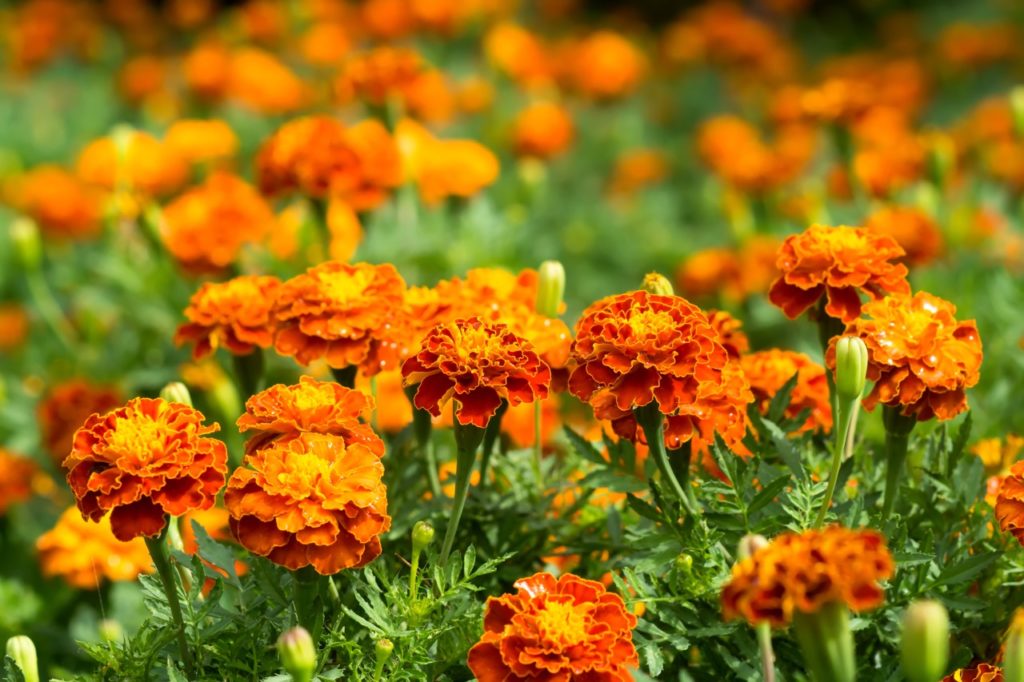
You might consider:
- French marigolds (T. patula)
- African marigolds (T. erecta)
- Signet marigolds (T. tenuifolia)
There are, of course, plenty of named varieties that you might choose within each of these categories.
How you set about planting Marigold seeds is very much dependent on two factors: your geographical region and the Marigold type, viz. T. erecta versus T. patula – ‘African Marigold’ versus ‘French Marigold’.
This is because T. patula cultivars come into flower within only 60 days while T. erecta cultivars usually need at least 75 days and even up to 100 to bloom.

In conjunction with that, consider your region’s growing season – in the north and Midlands it will be shorter than in the south-west of the country.
In most regions you should be able to plant T. patula cultivar seeds directly outdoors and enjoy a long blooming season.
With T. erecta cultivars, your region’s growing season will dictate whether you can plant seeds outdoors or whether you should start them indoors.
So, for example, in Leeds, with an average growing season of 163 days, if you sow seeds directly outdoors (not that we recommend it) you can enjoy T. patula Marigolds for three months but it would be a waste to sow T. erecta directly outdoors.
When To Sow Tagetes
When you will sow your marigolds will depend on whether you plan to sow them indoors or sow them directly where they are to grow in your garden.

Typically, marigolds are sown between March and May.
When planting indoors, you should aim to sow towards the beginning of this time period, and outdoor sowing should be carried out only after you pass the last frost date in your area.
Refer back to the guidelines above and the different marigold types to plan when best to sow yours.
Sowing Indoors
If you decide to sow your marigold seeds indoors, prepare a seed tray or other containers filled with good quality compost that is rich, moist yet free-draining.
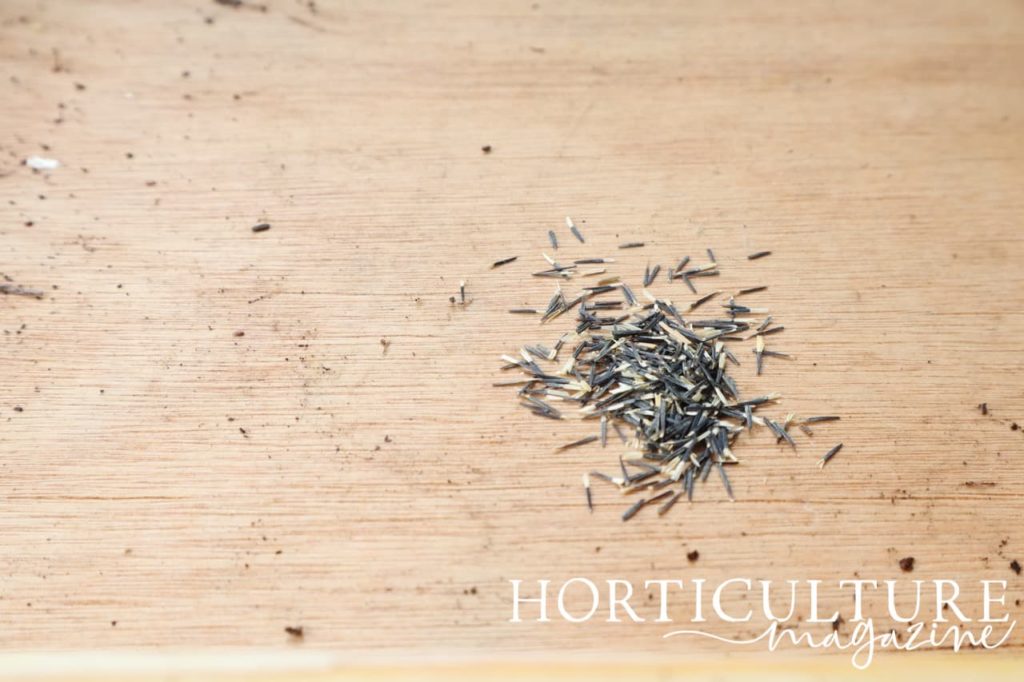
A seed-starting compost is ideal.
Scatter the marigold seeds over the surface of the growing medium, then cover them lightly (to a depth of around 5mm) with a little of your growing medium.
The seeds should germinate relatively quickly, as long as you keep the trays or pots in a warm place.
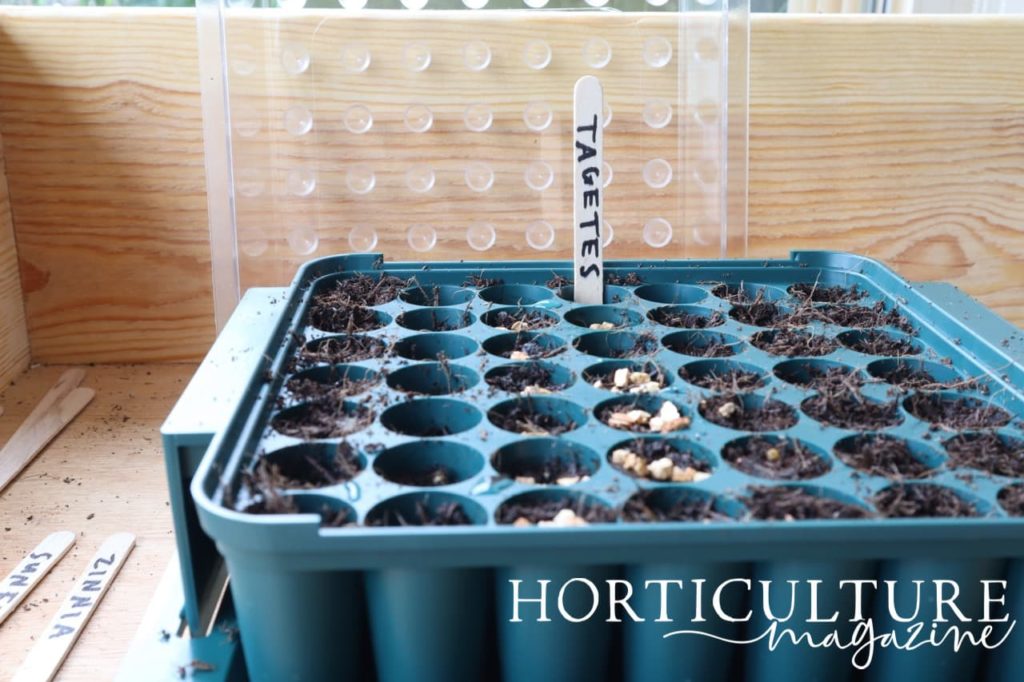
Marigold seeds do not need direct light to germinate but they do need the right temperature, and humidity is preferable.
Soil temperature should hover around 21°C for the seeds to germinate.
You can introduce humidity by covering (but not sealing) the pots with cling film or shrink wrap.
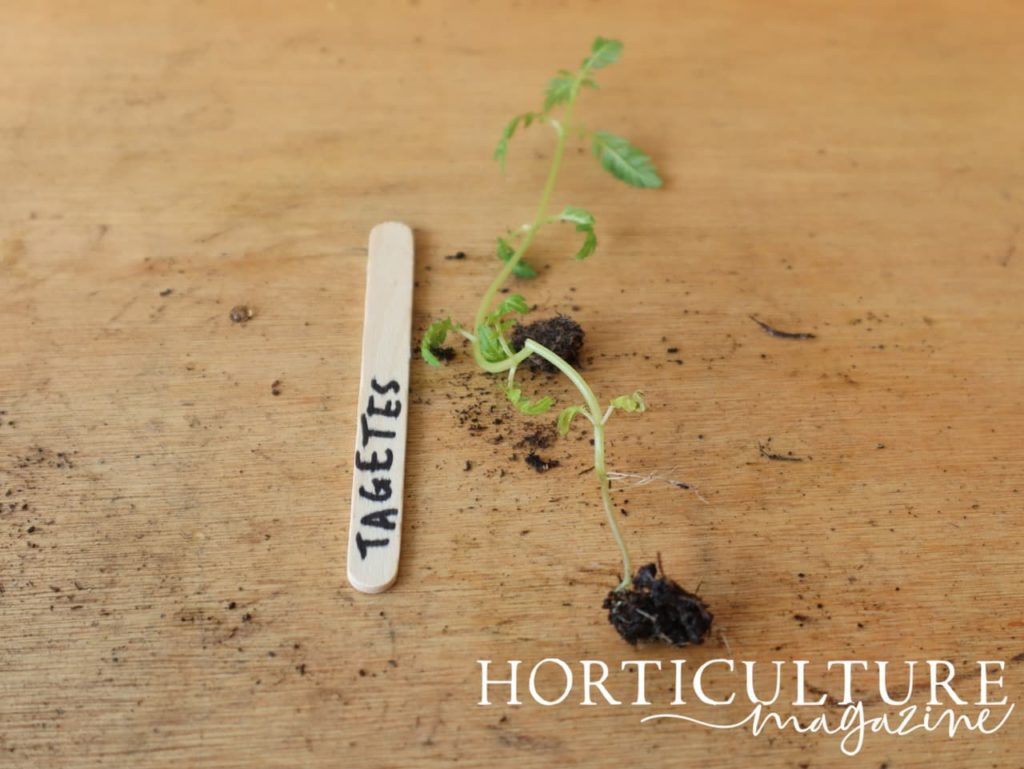
You can usually expect them to germinate in 5-7 days or so.
Once the seedlings are around 4-5cm tall, prick them out and pot them on into their own individual containers and grow them in a frost-free location until all risk of frost has passed in your area.
Once all risk of frost has passed, you can harden off then plant out your young marigolds in the garden in a sheltered position that gets plenty of full sun.

They should begin to bloom within a matter of weeks.
Direct Sowing
If you decide to sow marigold seeds outside where they are to grow, then you should make sure that you do so after the risk of frost has passed in your area.
In late spring, prepare the area for sowing by clearing weeds and raking the soil level.
“When sowing outdoors, especially in drifts, I find something called the stale seedbed technique very useful,” shares Master Horticulturist Peter Lickorish.
“This means preparing the ground thoroughly a few weeks before you intend to sow, including forking and then raking to consolidate.
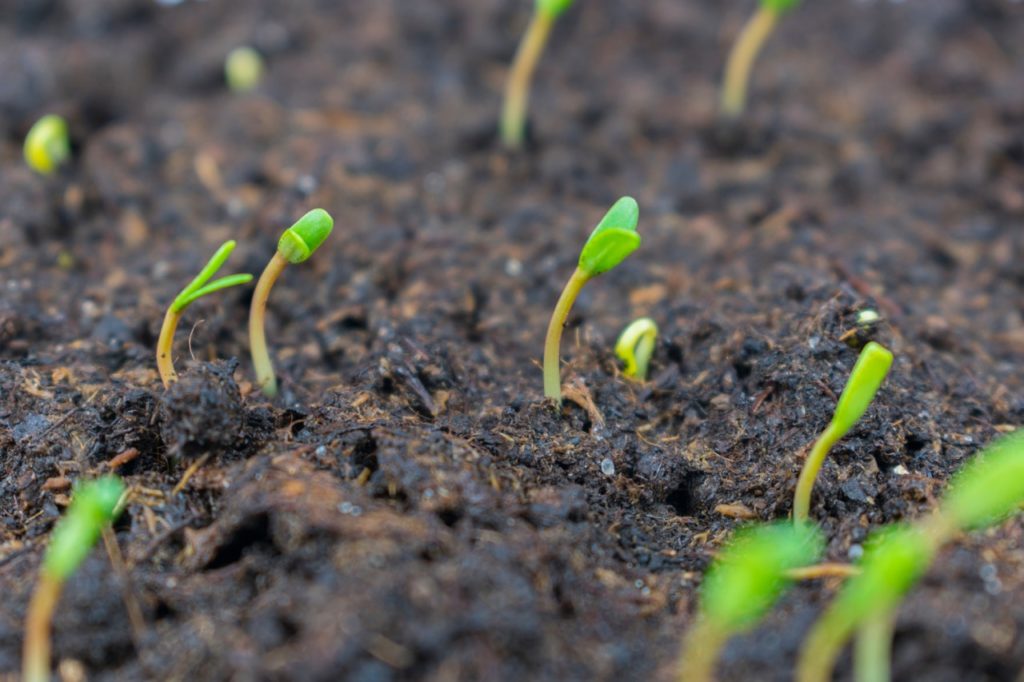
“This gives a few weeks for any weed seeds, brought to the surface by your hard work, to germinate.
“These can be lifted carefully, with minimal disturbance, and the ground can be sown into.
“It should reduce the number of weed seeds which germinate later and then interlope among a drift of marigolds.”
If planting into a bed or border, top dress this with well-rotted homemade compost.
If you wish to grow marigolds in containers, fill these with a peat-free multipurpose mix, making sure that the soil is moist before planting.

Just like when sowing indoors, cover the seeds only lightly.
They should germinate well and relatively quickly.
You can then simply thin the seedlings that emerge to give a final spacing of 10-20cm, depending on the specific variety that you have chosen to grow.
They should also flower within weeks of sowing as long as they are in the right position and cared for correctly.
